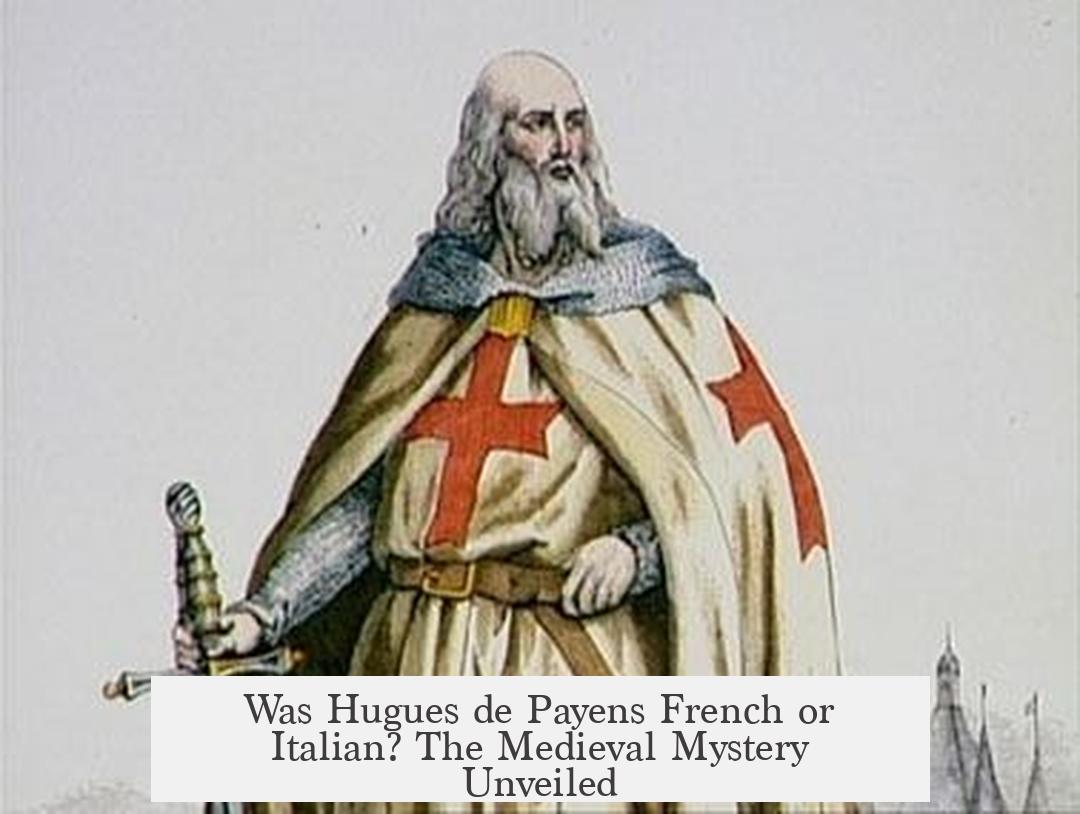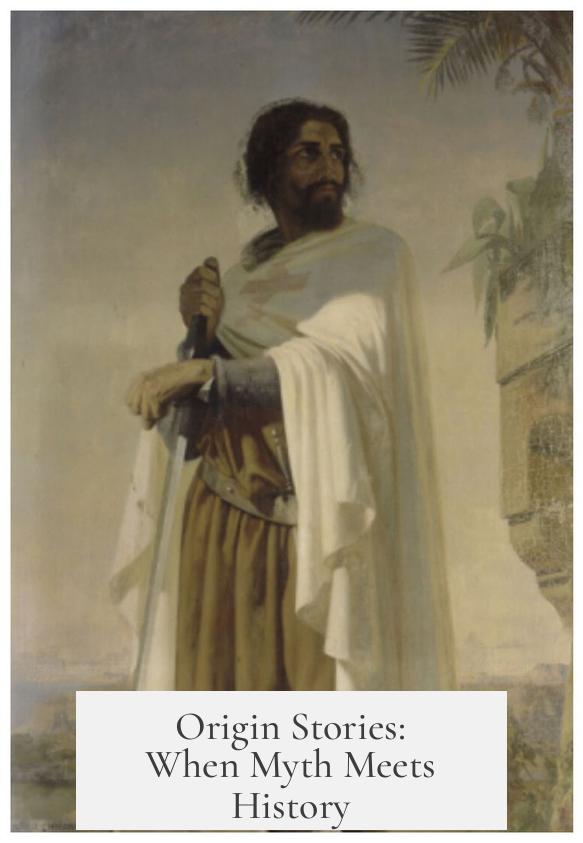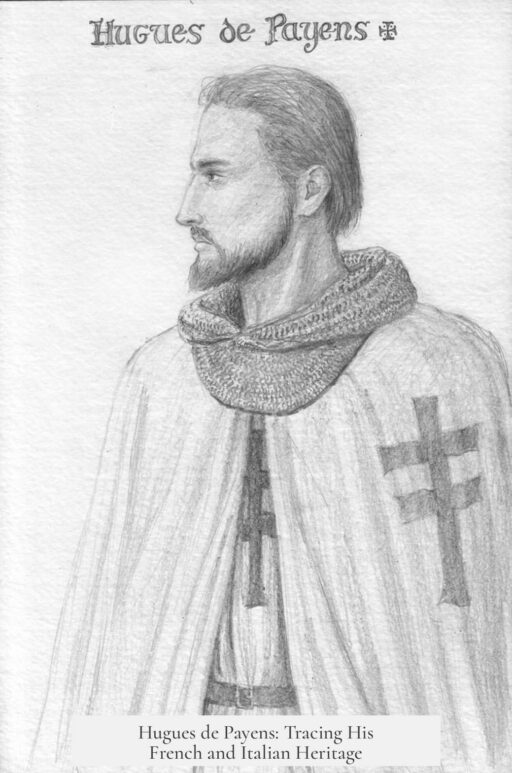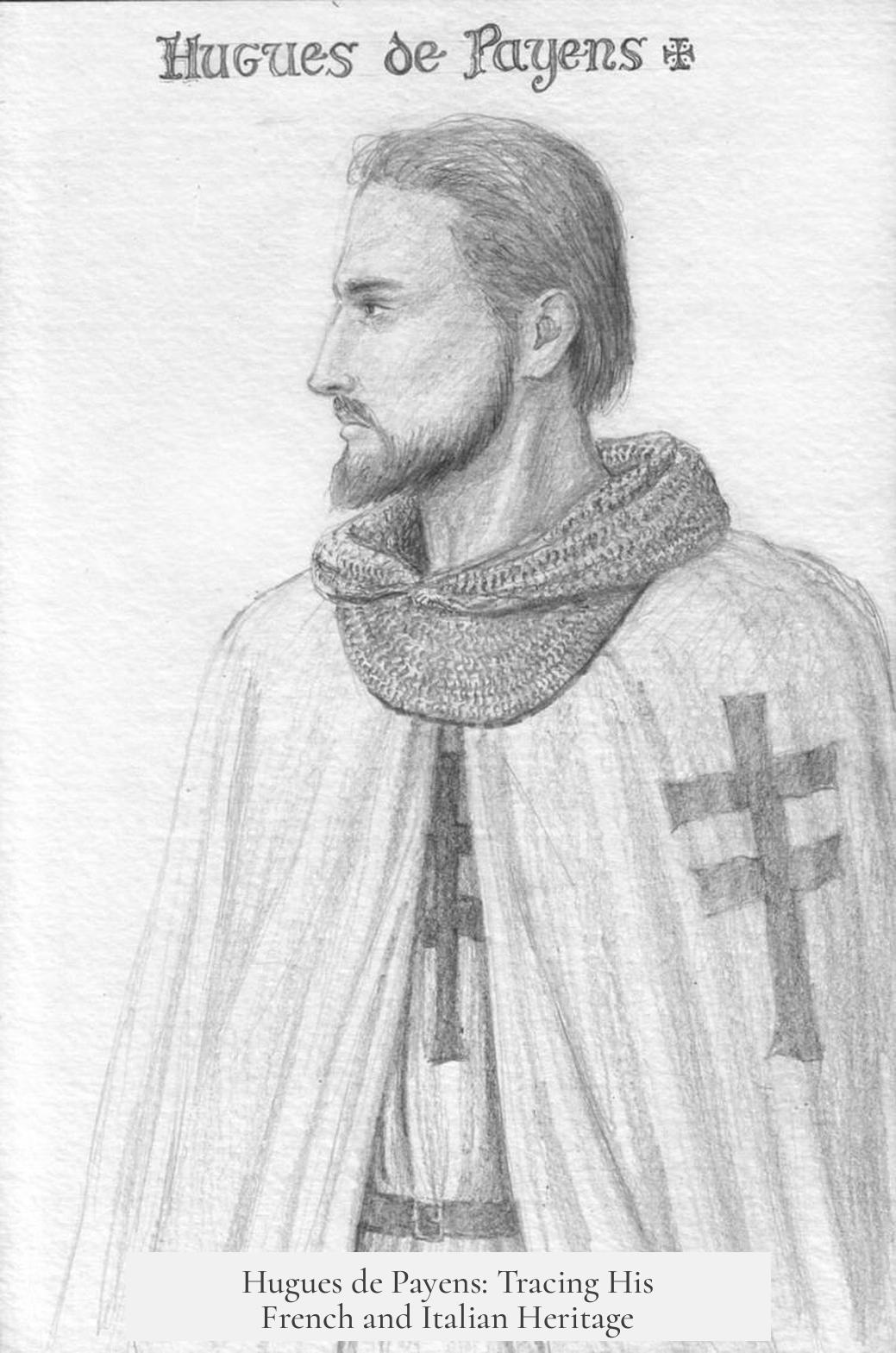Hugues de Payens was most likely French, although his exact origins remain uncertain due to a lack of contemporary evidence.
No contemporary records clearly state where Hugues de Payens, co-founder of the Knights Templar, came from. The first detailed historical account comes from William of Tyre, a 12th-century historian of the Kingdom of Jerusalem. William recorded Hugues’ name in Latin as “Hugo de Paganis,” a phrase that could refer to multiple places.
This ambiguity has led to two main theories regarding Hugues de Payens’ origins: that he was French or Italian.
The French origin theory is more widely accepted among historians. It identifies “de Paganis” with Payns, a village near Troyes in the Champagne region of France. This is supported by a 13th-century French translation of William of Tyre’s chronicle, where the anonymous translator added that Payns was “near Troyes.”
Several contextual factors support this French connection:
- The County of Champagne was a major center at the time.
- Count Hugh of Champagne, a noble from the region, was an early patron of the Templars.
- The Templars were officially recognized by the Church at the Council of Troyes in 1129.
These linkages strengthen the idea that Hugues was from Payns in France. His association with this region is historically consistent with the political and ecclesiastical support behind the early Templar movement.
The Italian origin theory is less substantiated. Some Italian sources claim Hugues de Payens came from Nocera de’ Pagani near Naples. This theory interprets “de Paganis” as referring to this Italian locality. However, no medieval documents verify this. The supposed 1103 letter from Hugues to his father in Nocera remains undocumented in any credible archive or manuscript.
Historians generally regard the Italian claim as a later invention. It seems to originate from traditions that arose many years after the Templars became influential. Such claims by different regions hoping to connect themselves to famous crusading figures were common in the late Middle Ages and early modern period.
Examples abound in Crusader history of origins being retroactively assigned or invented:
- The first kings of Jerusalem, Godfrey and Baldwin I, had unclear family histories despite their prominence.
- The influential Ibelin family had supposed origins in both Italy and France.
- Even the exact background of William of Tyre’s own family is unknown.
Only centuries later did various localities create origin stories for these important figures, often to boost prestige or political standing.
Modern historians maintain a cautious stance. Most either endorse the French origin theory based on the stronger contextual evidence or admit that his origins remain unknown. None of the well-documented Templar historians embrace the Italian origin narrative because of its lack of primary source support.
| Theory | Geographical Reference | Evidence | Historical Support |
|---|---|---|---|
| French Origin | Payns near Troyes, Champagne, France | William of Tyre’s Latin wording; 13th-century French translation; patronage of Count Hugh of Champagne; Council of Troyes | Widely accepted by historians; consistent with contemporary context |
| Italian Origin | Nocera de’ Pagani, near Naples, Italy | Later traditions; undocumented letter from 1103; no medieval records | Regarded as a later invention; little support in professional historiography |
The lack of reliable contemporary accounts is the main hurdle for definitive conclusions. William of Tyre’s silence on Hugues de Payens’ birthplace and the ambiguous Latin naming leave room for speculation. Historians rely on indirect clues evaluated through the lens of known political and ecclesiastical connections.
Summarizing key points:
- Strongest evidence places Hugues de Payens in the Champagne region of France near Troyes.
- The Italian origin theory lacks medieval documentary support and likely developed later.
- Later origin stories often emerged to add prestige to various localities.
- Modern scholarship tends to accept the French origin or acknowledges the uncertainty.
Was Hugues de Payens French or Italian? The Medieval Mystery Unveiled

So, was Hugues de Payens French or Italian? The honest answer is: nobody really knows for sure. Yes, you read that right. Despite being the founding Grand Master of the infamous Knights Templar—an order as legendary as the Holy Grail itself—Hugues de Payens’ exact origins remain cloaked in mystery.
Let’s unpack this medieval whodunit with a bit of history, a dash of detective work, and a sprinkle of why it even matters today.
The Early Puzzle: No Good Contemporary Clues
The Middle Ages weren’t exactly the “Instagram era” where everyone documented every event with hashtags and selfies. When Hugues and his fellow Templars kicked off their order in the early 12th century, no one foresaw the lasting impact this knightly band would have. So, naturally, no chronicler bothered to scribble down his hometown on a scroll for posterity.
William of Tyre, the court historian for the Kingdom of Jerusalem and one of our earliest sources, mentions Hugues, calling him “Hugo de Paganis” in Latin. But here’s the kicker: that name isn’t a neat label tying him to a single spot. “De Paganis” could point to multiple places, creating more confusion than clarity.
French Roots? The Champagne Connection
Most English and French historians lean toward a French origin, associating “de Payens” with the village of Payns near Troyes in the County of Champagne. The County of Champagne itself was a hotbed of crusader activity, and the Templars got their official church blessing at the Council of Troyes in 1129—convened by the local count, Hugh of Champagne, no less.
This neat geographic tie lends a lot of weight to the French origin theory. Plus, the anonymous 13th-century French translator of William’s chronicle explicitly associates Payns with Troyes, cementing the link for many scholars.
The Italian Angle: Nocera de’ Pagani’s Claim
Hold your horses: some Italian sources argue Hugues hailed from Nocera de’ Pagani near Naples. They read “de Paganis” differently. However, this claim is shakier than a wooden sword in battle.
No medieval documents back up the Italian side. Rumors abound about a letter Hugues supposedly wrote to his father from Nocera in 1103, but there’s no surviving proof. It feels more like medieval fan fiction, conjured up when the Templars became famous and local communities wanted bragging rights to the legendary knight.
Origin Stories: When Myth Meets History

Let’s be real; the Crusader States thrived on stories. As the Templars rose in fame through the 12th and 13th centuries, various regions tried to claim a piece of the knightly legend. This wasn’t unusual. Other crusader heroes, like the kings of Jerusalem or the founder of the Ibelin family, sported multiple origin tales—some French, some Italian—making genealogy a medieval game of “Where’s Waldo?”
Hugues de Payens got caught up in this trend. Both Payns in France and Nocera de’ Pagani in Italy wanted to be known as his birthplace, even without solid proof.
Modern Historians Weigh In
Most contemporary historians stay cautious. They either accept the French theory, given the stronger documentary and circumstantial links, or admit that the mystery remains unsolved. Skeptics generally dismiss the Italian claim as a later invention without medieval evidence.
After all, the past is complicated, especially when it involves an enigmatic figure who became legendary long after his time.
Why Does It Matter?
You might wonder why Hugues de Payens’ origins even spark debate centuries later. Here’s the scoop: Understanding where he came from helps us grasp the cultural lenses through which the Templars were shaped. If he was French, the order’s early structure and alliances align more with French crusader interests. If Italian, different influences might have played a role.
Plus, tracing his roots taps into the bigger story of how history blends fact and folklore. It teaches us to question sources and remember that history isn’t always neatly packaged like a modern biography.
Final Thoughts: Embracing the Medieval Enigma
In the end, Hugues de Payens remains a fascinating puzzle piece in the epic crusader saga. His alleged French ties to Payns near Troyes fit the historical framework best. Yet, the Italian-born narrative lingers as a curious footnote—almost like a medieval urban legend.
So, next time someone asks, “Was Hugues de Payens French or Italian?” you can confidently say: “Probably French, but the truth might still be hiding in a dusty archive or a forgotten parchment somewhere.” And that, dear reader, is part of what keeps history so delightfully intriguing.
Who knew medieval origins could be this suspenseful? Now, if only we could get him to update his LinkedIn profile!




